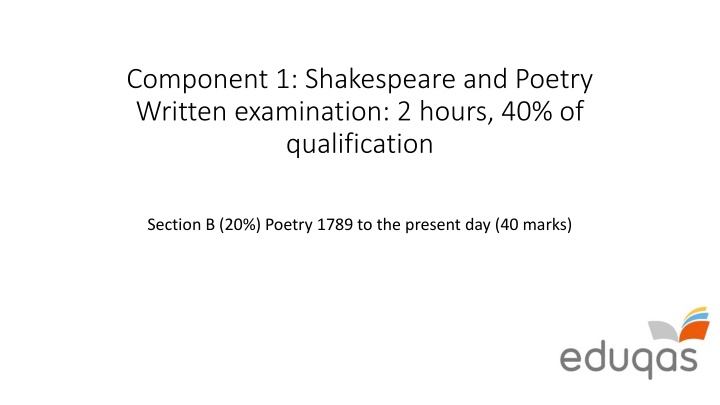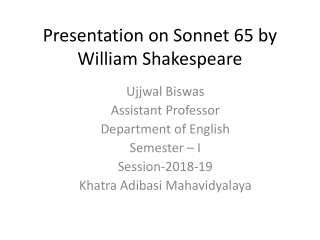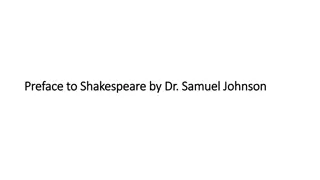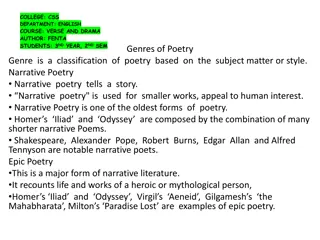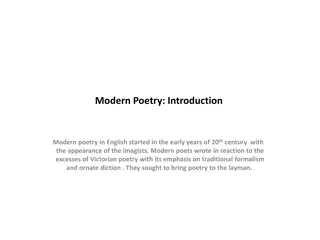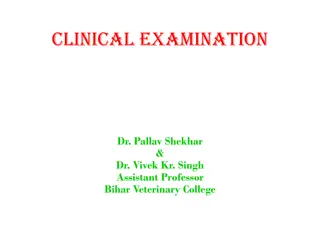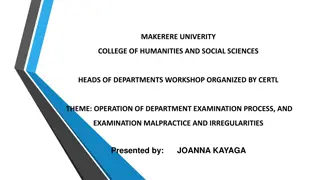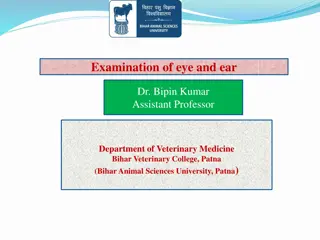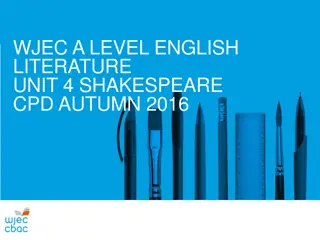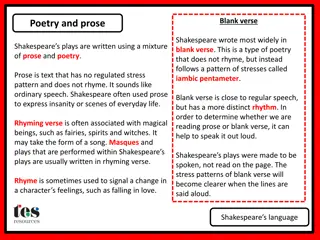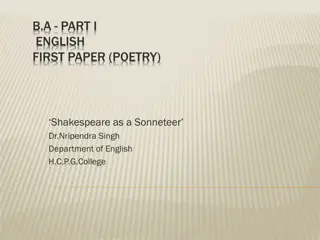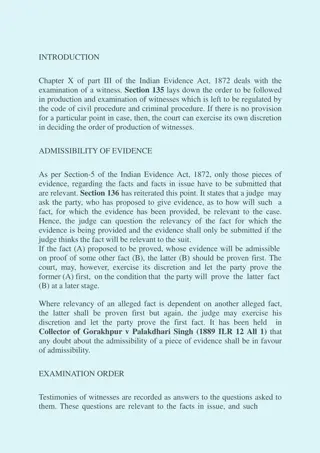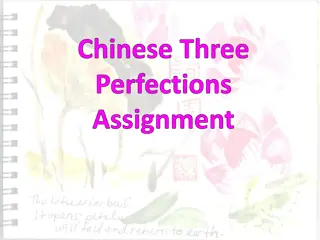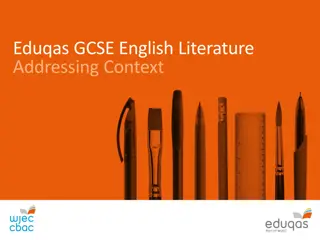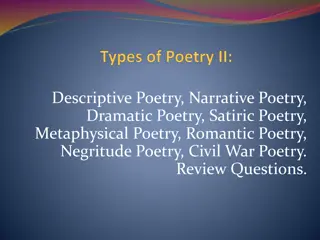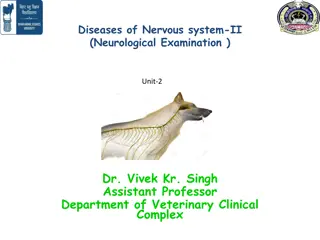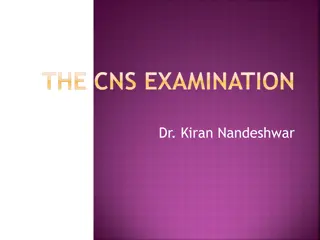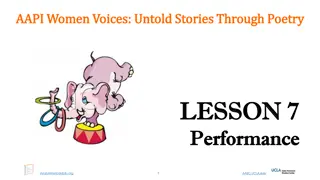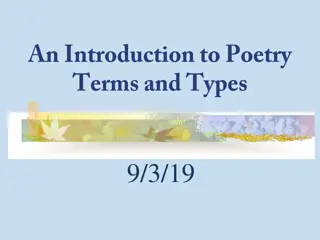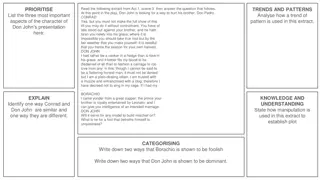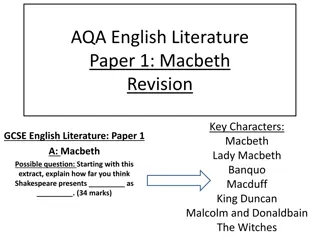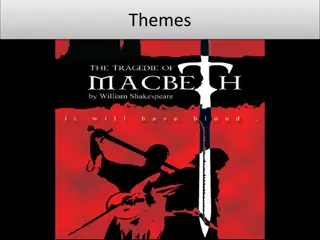Shakespeare and Poetry Examination Overview
This examination assesses knowledge of poetry from 1789 to the present day, focusing on analyzing and comparing poems within the WJEC Eduqas Poetry Anthology. Learners must demonstrate their ability to read, understand, and respond to texts effectively, analyze language and structure, and show understanding of the contexts in which poems were written. The assessment objectives emphasize critical thinking and the ability to form informed personal responses with textual evidence to support interpretations.
Download Presentation

Please find below an Image/Link to download the presentation.
The content on the website is provided AS IS for your information and personal use only. It may not be sold, licensed, or shared on other websites without obtaining consent from the author.If you encounter any issues during the download, it is possible that the publisher has removed the file from their server.
You are allowed to download the files provided on this website for personal or commercial use, subject to the condition that they are used lawfully. All files are the property of their respective owners.
The content on the website is provided AS IS for your information and personal use only. It may not be sold, licensed, or shared on other websites without obtaining consent from the author.
E N D
Presentation Transcript
Component 1: Shakespeare and Poetry Written examination: 2 hours, 40% of qualification Section B (20%) Poetry 1789 to the present day (40 marks)
Section B The anthology. This assessment will test knowledge and understanding of poetry from 1789 to the present day. Learners will be assessed on two poems from the WJEC Eduqas Poetry Anthology. In the first question, learners will be asked to write about a specified poem. In the second question, learners will be asked to write about a second poem chosen from the WJEC Eduqas Poetry Anthology, and compare it to the first. Learners will be expected to consider the context of each poem, its content and key ideas, and the poets use of language, structure and form. Learners must study all of the poems in the WJEC Eduqas Poetry Anthology in preparation for this assessment. The anthology covers a range of poetry and is designed to introduce learners to the rich heritage of poetry across centuries as well as illustrating how poets explore similar themes in different ways.
Assessment objectives Learners must demonstrate their ability to: AO1 Read, understand and respond to texts. Students should be able to: maintain a critical style and develop an informed personal response use textual references, including quotations, to support and illustrate interpretations AO2 Analyse the language, form and structure used by a writer to create meanings and effects, using relevant subject terminology where appropriate AO3 Show understanding of the relationships between texts and the contexts in which they were written Comparison: runs across AOs 1, 2 and 3
SECTION B POETRY 71. Read the poem below, Sonnet 43, by Elizabeth Barrett Browning. Sonnet 43 is a poem about love. How does Elizabeth Barrett Browning present love in this poem? Remember to refer to the contexts of the poem in your answer. [15]
(b) Choose one other poem from the anthology in which the poet also writes about nature. Compare the presentation of nature in your chosen poem to the presentation of nature in To Autumn. [25] In your answer to part (b) you should compare: the content and structure of the poems what they are about and how they are organised; how the writers create effects, using appropriate terminology where relevant; the contexts of the poems, and how these may have influenced the ideas in them.
Form, structure and language Form conventions Structure building blocks and patterns Language evocation Terminology Avoid spotting PEA Select/highlight
Context relevant material from outside of the text time the poems were written Autobiographical detail the times they are set social and cultural features literary contexts Context is best seen as a lens through which a poem can be viewed to reveal meaning The mark scheme focuses on the relationship between text and context, so bolted on context will receive limited reward Introducing context as a second step after initial study and seeing how that illuminates/changes understanding is the key to its successful incorporation
Comparison The focus for choice of the second poem will be provided, almost certainly relating to themes, so thinking about grouping the poems into themes from the very start will be useful. Bear in mind, however, that many of the poems could well encompass more than one theme. A holistic approach, bringing the texts into contact with each other with focus on the theme, is best. Key word: discussion.
Support Specification Specimen assessment materials Teacher handbook Digital resources
